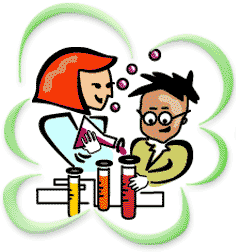 Ch. 6 - Cold-Blooded Animals
Chapter Objectives:
-identify how scientists classify animals
-differentiate between invertebrates and vertebrates
-identify the characteristics of warm-blooded and cold-blooded animals
-differentiate between warm-blooded/cold-blooded animals
-identify what an animal behavior scientist does
-identify the characteristics of fish and amphibians
-identify and describe the structures and features that benefit fish and amphibians in survival and growth
-construct an explanation, using Scripture, stating why animals reproduce after their own kind
-identify the ways fish and amphibians reproduce
-sequence the stages of frog metamorphosis
-identify the characteristics, structures, and features of reptiles
-describe how God has provided the structures and features that benefit reptiles for survival and growth
-sequence the pattern of the reptile life cycle
-explain, using Scripture, why there will one day be no predators and no prey
-infer in an investigation how a cold-blooded animal depends on the temperature of its habitat for survival and growth
-explain why people should care for reptiles
-identify the characteristics of insects and spiders
-describe the structures and features that benefit insects and spiders in survival and growth
-identify the ways that insects and spider reproduce
-sequence the stages of ladybug metamorphosis
-create a hypothesis about the stages in the life cycle of a mealworm
-construct a living space for mealworms
-observe and record the changes in a mealworm’s life cycle
-draw conclusions from the data collected
Ch. 6 - Cold-Blooded Animals
Chapter Objectives:
-identify how scientists classify animals
-differentiate between invertebrates and vertebrates
-identify the characteristics of warm-blooded and cold-blooded animals
-differentiate between warm-blooded/cold-blooded animals
-identify what an animal behavior scientist does
-identify the characteristics of fish and amphibians
-identify and describe the structures and features that benefit fish and amphibians in survival and growth
-construct an explanation, using Scripture, stating why animals reproduce after their own kind
-identify the ways fish and amphibians reproduce
-sequence the stages of frog metamorphosis
-identify the characteristics, structures, and features of reptiles
-describe how God has provided the structures and features that benefit reptiles for survival and growth
-sequence the pattern of the reptile life cycle
-explain, using Scripture, why there will one day be no predators and no prey
-infer in an investigation how a cold-blooded animal depends on the temperature of its habitat for survival and growth
-explain why people should care for reptiles
-identify the characteristics of insects and spiders
-describe the structures and features that benefit insects and spiders in survival and growth
-identify the ways that insects and spider reproduce
-sequence the stages of ladybug metamorphosis
-create a hypothesis about the stages in the life cycle of a mealworm
-construct a living space for mealworms
-observe and record the changes in a mealworm’s life cycle
-draw conclusions from the data collected
Science Information
 Ch. 6 - Cold-Blooded Animals
Chapter Objectives:
-identify how scientists classify animals
-differentiate between invertebrates and vertebrates
-identify the characteristics of warm-blooded and cold-blooded animals
-differentiate between warm-blooded/cold-blooded animals
-identify what an animal behavior scientist does
-identify the characteristics of fish and amphibians
-identify and describe the structures and features that benefit fish and amphibians in survival and growth
-construct an explanation, using Scripture, stating why animals reproduce after their own kind
-identify the ways fish and amphibians reproduce
-sequence the stages of frog metamorphosis
-identify the characteristics, structures, and features of reptiles
-describe how God has provided the structures and features that benefit reptiles for survival and growth
-sequence the pattern of the reptile life cycle
-explain, using Scripture, why there will one day be no predators and no prey
-infer in an investigation how a cold-blooded animal depends on the temperature of its habitat for survival and growth
-explain why people should care for reptiles
-identify the characteristics of insects and spiders
-describe the structures and features that benefit insects and spiders in survival and growth
-identify the ways that insects and spider reproduce
-sequence the stages of ladybug metamorphosis
-create a hypothesis about the stages in the life cycle of a mealworm
-construct a living space for mealworms
-observe and record the changes in a mealworm’s life cycle
-draw conclusions from the data collected
Ch. 6 - Cold-Blooded Animals
Chapter Objectives:
-identify how scientists classify animals
-differentiate between invertebrates and vertebrates
-identify the characteristics of warm-blooded and cold-blooded animals
-differentiate between warm-blooded/cold-blooded animals
-identify what an animal behavior scientist does
-identify the characteristics of fish and amphibians
-identify and describe the structures and features that benefit fish and amphibians in survival and growth
-construct an explanation, using Scripture, stating why animals reproduce after their own kind
-identify the ways fish and amphibians reproduce
-sequence the stages of frog metamorphosis
-identify the characteristics, structures, and features of reptiles
-describe how God has provided the structures and features that benefit reptiles for survival and growth
-sequence the pattern of the reptile life cycle
-explain, using Scripture, why there will one day be no predators and no prey
-infer in an investigation how a cold-blooded animal depends on the temperature of its habitat for survival and growth
-explain why people should care for reptiles
-identify the characteristics of insects and spiders
-describe the structures and features that benefit insects and spiders in survival and growth
-identify the ways that insects and spider reproduce
-sequence the stages of ladybug metamorphosis
-create a hypothesis about the stages in the life cycle of a mealworm
-construct a living space for mealworms
-observe and record the changes in a mealworm’s life cycle
-draw conclusions from the data collected
Important Information
Week of April 15
Monday
MAPS Testing (Math)
Tuesday
Chapel Today/MAPS Testing (Reading)
Wednesday
Art Today/MAPS Testing (Language)
Thursday
Friday
Library Today/Early Dismissal
Monday
MAPS Testing (Math)
Tuesday
Chapel Today/MAPS Testing (Reading)
Wednesday
Art Today/MAPS Testing (Language)
Thursday
Friday
Library Today/Early Dismissal
Contact
Oasis Christian Academy
151 King Road
Winter Haven, Florida 33880
Room #8
863-293-0930 (office)
E-mail: sclark [at] ocalions.org